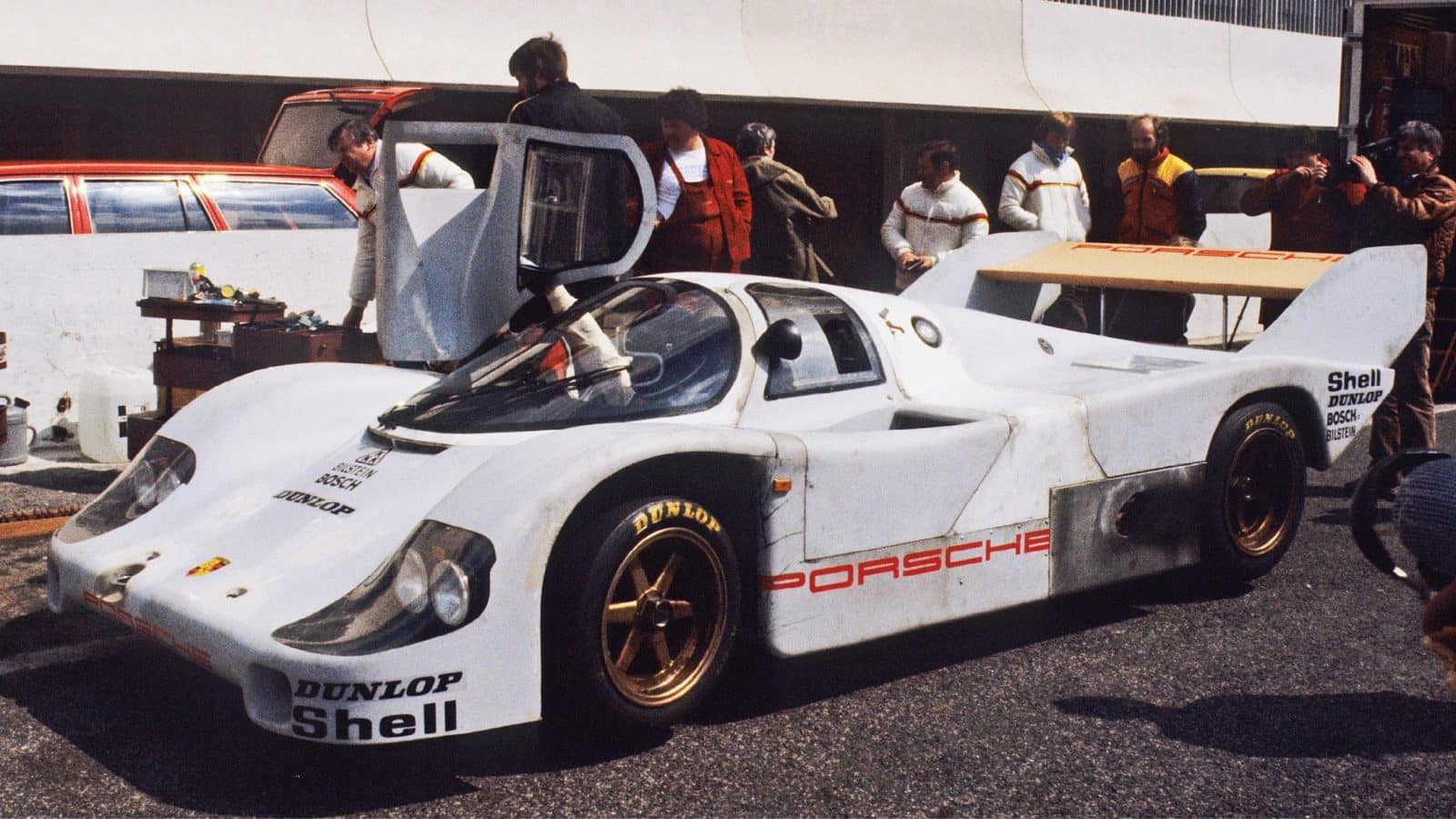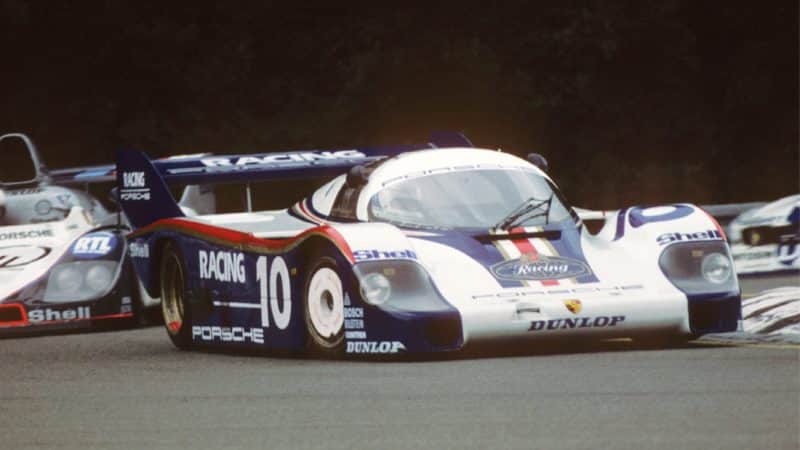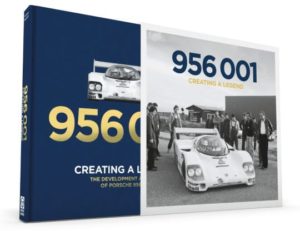956 001 book review: the father of Group C Porsches
For a car that only raced twice, Porsche’s pioneering 956 is still fully deserving of its own biography, says Damien Smith

Chassis 001 was extensively tested in early 1982 by Jürgen Barth, Jacky Ickx, Roland Kussmaul and Derek Bell
McKlein
Forty years of Group C? It’s the anniversary that just keeps on giving. If the heavyweight triple-volume celebration of works Porsche 962s reviewed in this space last month, Ultimate Works 962 by Serge Vanbockryck, was the Le Mans 24 Hours of books on this ever-popular subject, this trim single slipcased limited edition publication is a Norisring sprint. Which is apt, given that the celebrated Nuremberg street event was one of only two races that 956 chassis 001 took part in.
The premise of focusing purely on a single chassis of a special model has caught on in recent years and justification for this one is all too obvious: 956 001 was, as the book describes it, the “father of all Group C Porsches and starting point of the most successful sports car of the 20th century”. It charts a timeframe beginning on June 22, 1981 when Porsche pressed the big green button for a car built to the new Group C regulations, and ends with 001’s final testing miles dedicated to work on Motronic fuel injection, at the make’s Weissach proving ground on March 1, 1983.
There’s also an ‘inspection’ of the chassis involving the 956’s illustrious architect Norbert Singer, an owner history and a few closing words from the current proprietor, experienced amateur racer Shaun Lynn (father of modern-era World Endurance Championship and IMSA ace Alex, although that’s not referenced). Lynn persuaded renowned Group C collector Henry Pearman to release 001 to him in 2015, to sit proudly alongside his double Le Mans-winning New-Man Joest 956, 117. Pearman contributes too, with an ‘inside view’ on how he acquired the car from Champion Racing back in 2005.
Broken into six chapters and easily digestible sub-sections, this is a smartly designed work with production values befitting the price point, although the translated text is a little dry and there’s less of it than you might expect over its 272-page duration. The image selection inevitably relies heavily on Porsche’s own archive, particularly for the chapters on conception, Singer’s famed wind-tunnel work and the 7270 miles of testing (plus two 30-hour endurance dyno runs) 001 completed across 14 months. But the DPPI agency and independent collections have also been called upon to document a car that ran in a gloriously rough and unpainted state of presentation, before being clothed in the first iteration of the model’s famous works Rothmans colours. The black and whites of the very first shakedown, on March 27, 1982 at Weissach, still send a shiver given the hindsight significance – only enhanced by Jürgen Barth’s cool combo of peaked open-face helmet, balaclava and shades. It’s a great and obvious choice for the book cover and slipcase.

The final outing for 001 was Norisring in 1982, where it was driven to victory by Jochen Mass
DPPI
Such was the short timescale of the 956 – 85 days from that first roll-out to victory at the 1982 Le Mans 24 Hours – 001 was also the chassis that gave the model its competitive bow, at the Silverstone 6 Hours in May. The debut turned into an infamously frustrating fuel consumption run for Derek Bell and Jacky Ickx, who had scorched to pole position, as the drivers lapped for most of the duration with one arm figuratively tied behind their backs to finish second behind the winning Group 6 Lancia LC1. In his preface and in the quote lifted from his book All My Porsche Races, Bell vents his oft-told frustration, but Porsche race director Peter Falk is more phlegmatic. “Silverstone was just right,” he says. “It gave us the first opportunity in race conditions to see if the car worked the way we thought it would. It was a test for Le Mans, which was our real focus.”
“956 001 was the starting point of the most successful sports car of the 20th century”
Chassis 001 was an unused spare for Le Mans, where Ickx and Bell led Porsche to its historic 1-2-3 – although as the author claims to conclusively prove, the ‘father’ did make a key contribution when Al Holbert lost the driver’s door to 004 on the Mulsanne following a pitstop. It’s been said Porsche used the door from 001 as replacement and here, by comparing photos to shots from Silverstone, the author concludes “you can see the offset of the Rothmans lettering around the ‘n’ of 004 fits exactly with the lettering on 001’s door”. So there you go. This far down the line, it’s the minute details that count.
A week after Le Mans, 001 was sent to the Norisring for the 200-mile race around the former Nazi rally grounds, where the author recalls witnessing Jochen Mass managing a dwindling fuel level to beat Manfred Winkelhock’s Zakspeed Ford C100 by a scant second after 70 laps, for the 956’s maiden home win. Thereafter, 001 returned to test hack duties before being consigned to history. Sports boss Helmuth Bott had promised Ickx the car for a “symbolic price” and following the Belgian’s retirement it was duly delivered to him on December 10, 1986 – whereupon Ickx “transferred it to a Belgian automobile dealer”! He never has come across as the sentimental sort.
 |
956 001: Creating a Legend Thomas Nehlert Sport Fahrer, £175 ISBN 9783945390146 |
